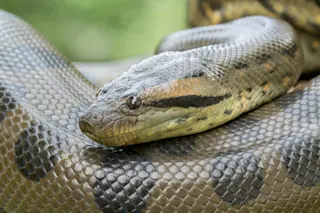The Amazon rainforest encompasses an enormous area spanning eight South American countries. Considered one of the most biodiverse ecosystems in the world, it's home to over 3 million animal and plant life species. Included among them are dangerous animals you'll want to avoid. Here is a look at five dangerous rainforest animals.
(Credit:Stacey Newman/Shutterstock)
There are over 800 species in the order Anguilliformes, otherwise known as "true eels." However, the electric eel isn't one of them. True eels live primarily in saltwater, while electric eels live in freshwater. It's actually a type of knife fish. They can release an electrical charge of up to 860 volts, making them the premier natural generator of electricity in nature.
The unique way they create electricity is with cells called electrocytes, capable of producing both low and high-voltage charges. While the shock from an electric eel may not be enough to kill a person, ...















